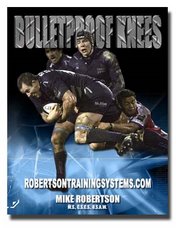
(Originally published at www.IFASTOnline.com)
I love the term "sport-specific." Not because it's a hot buzz word, but because it's so overused nowadays. It seems as though if you aren't talking about sport-specific programming, sport-specific exercises, etc., you obviously don't know what you're talking about.
The key with sport-specificity, however, is the context within which you're applying it. Especially with younger athletes, the goal should be to have some sport-specificity to the programming (deceleration work for team sports, scap/rotator cuff stabilization for overhead athletes, etc.), but not a ridiculous amount. After all, a 14 year-old athlete may be awesome at baseball, but his long-term potential is seriously compromised by letting him play the same sport year round. Wouldn't he learn more sports and motor skills by also playing basketball in the winter? Or soccer in the fall? The goal should be to develop a broad athletic base that can be built upon in the future.
Beyond the physical advantages to playing multiple sports, there are mental advantages as well. Firstly, you learn to adapt to situations in which you are uncomfortable. If you aren't as great physically at soccer, you learn other ways to be competitive. Maybe you get better technically or tactically in your sport. The bottom line is you learn how to adapt.
Secondly, you don't run the same risk of burnout. How many great young athletes have you heard of that quit early because they were burned out? I'm all for teaching our kids lessons like competition, teamwork, camraderie, etc., but we have to draw the line at some point and allow them to have fun.
Quite simply, sport-specificity is great, but it's not the be-all, end-all of training. At I-FAST, especially with our younger athletes, our goal is to build ATHLETES first and foremost. The more athletic they are, the more potential they have to succeed in any sport in the future.
Stay strong
MR









1 comment:
MR, I couldn't agree more! I think there is something to be said for changing with the seasons. Most of the world's greatest athletes did compete in more than one sport before becoming entirely focused on one. There is an essay in the back of my head about the cultural/environmental impact of letting companies create indoor facilities that replicate outdoor conditions (i.e. skating/hockey rinks) and the implications for our interaction with the seasonal outdoor environment. There is a lot of money to be made in simulating seasonal conditions to bring sports indoor during what would naturally become the off-season!
-Jaya
Post a Comment